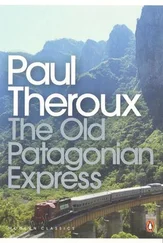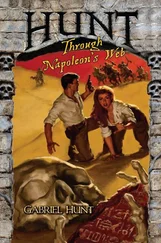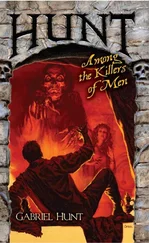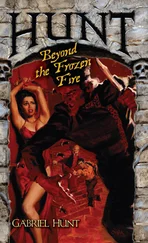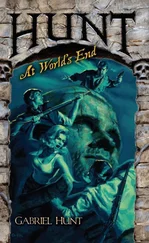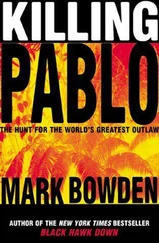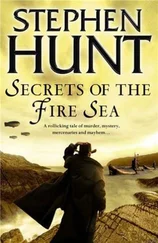Gabriel Hunt - Hunt Through the Cradle of Fear
Здесь есть возможность читать онлайн «Gabriel Hunt - Hunt Through the Cradle of Fear» весь текст электронной книги совершенно бесплатно (целиком полную версию без сокращений). В некоторых случаях можно слушать аудио, скачать через торрент в формате fb2 и присутствует краткое содержание. Год выпуска: 2011, Издательство: Dorchester Publishing Co., Inc., Жанр: Старинная литература, на английском языке. Описание произведения, (предисловие) а так же отзывы посетителей доступны на портале библиотеки ЛибКат.
- Название:Hunt Through the Cradle of Fear
- Автор:
- Издательство:Dorchester Publishing Co., Inc.
- Жанр:
- Год:2011
- ISBN:нет данных
- Рейтинг книги:3 / 5. Голосов: 1
-
Избранное:Добавить в избранное
- Отзывы:
-
Ваша оценка:
- 60
- 1
- 2
- 3
- 4
- 5
Hunt Through the Cradle of Fear: краткое содержание, описание и аннотация
Предлагаем к чтению аннотацию, описание, краткое содержание или предисловие (зависит от того, что написал сам автор книги «Hunt Through the Cradle of Fear»). Если вы не нашли необходимую информацию о книге — напишите в комментариях, мы постараемся отыскать её.
Hunt Through the Cradle of Fear — читать онлайн бесплатно полную книгу (весь текст) целиком
Ниже представлен текст книги, разбитый по страницам. Система сохранения места последней прочитанной страницы, позволяет с удобством читать онлайн бесплатно книгу «Hunt Through the Cradle of Fear», без необходимости каждый раз заново искать на чём Вы остановились. Поставьте закладку, и сможете в любой момент перейти на страницу, на которой закончили чтение.
Интервал:
Закладка:
On her flank, an inscription had been chiseled in angular Greek letters: Accursed daughter of Echidna, rest eternal be yoursYour people shall forget you not, though generations passYour precious one shall hold your image close where you hold hisAnd your holy treasure speeds on Hermes’ wings to Taprobane,Returning to the Cradle of Fear
Gabriel reached into the statue’s open mouth.
“What are you doing?” Tigranes said. And Christos said, “You shouldn’t—”
Gabriel pulled his hand away and came toward them. He held between his fingers a silver coin. On one side was an image of an eagle; on the other, a male face, in profile. He extended it toward Tigranes, who shook his head, and then to Christos, who peered closely at its surface. “The writing on it…is this coin Greek?”
“Egyptian,” Gabriel said.
He turned his attention to the wall. It had been painted with a single enormous teardrop shape; above this, in the uppermost corner of the wall, was the hint of a coastline to the north. It was the reverse of the map he’d found in Egypt: this one showed the island in full and the landmass of India only in part. It also had details painted in—not many, but enough to indicate a path from a spot on the coast to a location inland, very near the center of the island. If this was supposed to be Sri Lanka—Taprobane, as it was known in the days of Alexander—the destination marked would be just northeast of Dambulla. He’d been there once, in pursuit of a priceless wooden Bodhisattva figure stolen from the famous Golden Temple. He hadn’t paid much attention to anything else while he was there—but he had seen the occasional sphinx mixed in among the other figures on wall murals and carvings.
As he recalled, the legends of Sri Lanka spoke of it as a “man-lion”— narasimha —and it played the role of guardian, much as it had here in Greece. Across the sea in southern India, they gave it a Sanskrit name, purush-amriga —the human-beast. Under one name or another sphinxes popped up throughout the lands of Asia. But just what the connections were between the island of Sri Lanka, the Egyptian sphinx, and the sphinx depicted here—presumably the one from the Oedipodea —was a mystery to Gabriel. And if there was one thing he couldn’t abide, it was a mystery. Especially one people were willing to kill each other over.
“I think the time has come for us to find out a bit more about this sphinx,” he said to Tigranes. “If you know anything—”
“I do,” Tigranes said, nodding slowly. “The tale of Oedipus is but half the matter of the Oedipodea. The poet also told the story of the sphinx: her birth, her fierce defense of Thebes, her departure thence for Chios’ shores—”
“We don’t have four nights, I’m afraid,” Gabriel said.
“That’s quite all right,” Tigranes said. “I’ll begin where you wish.”
“I thought you said you couldn’t do that,” Gabriel said, “that you could only recite the entire poem from the start.”
“Do you believe everything someone tells you?” Tigranes said with a sly hint of a smile. “Here, let us go out into the main chamber again. I will feel my instrument’s absence less in the shadow of my master.”
They returned to the room with the statue of Homer in it, sat down at the edge of the pool. Tigranes began to speak, to sing, his voice echoing gently from wall to wall. Gabriel looked up at the statue. With the firelight playing over its carved features, you could almost imagine that it, and not Tigranes, was reciting the ancient words.
And the story of the sphinx unfolded. Gabriel didn’t interrupt, just listened, and as he did, pieces of the puzzle finally began to fall into place.
Chapter 17
“Are you saying she really existed, all those centuries ago?” Christos said when Tigranes fell silent. He’d been listening even more intently than Gabriel, if that was possible. “She really lived?”
“What, the sphinx? She was as real,” Tigranes said, “as Oedipus—as real as the Minotaur and the Lernean Hydra—as real as Zeus and Apollo and all the rest of them. How real that is, each man must decide for himself. I, for one, am prepared to believe she was as real as you or I. This world has many strange things in it, and one must never fall into the trap of saying, ‘I have never seen it, so it follows that no man has; and as no man has ever seen it, thus it cannot be.’”
This was a lesson Gabriel had learned many times himself over the years, when his voyages to some of the world’s more obscure corners had brought him face to face with things other people might say were impossible. Why, earlier this very year he’d fought side by side in the Guatemalan jungle with a man no less than 150 years old, kept youthful by the waters of, well, if it wasn’t literally the Fountain of Youth it might as well have been. Cierra Alamanzar had been with him; they had both witnessed it. But could they tell anyone what they’d seen without being called liars or worse? They could not. That didn’t mean it wasn’t true.
Still, a sphinx—an actual, living beast, half lion and half human? If ever something deserved to be called impossible…
“So you’re saying,” Christos began again, “that—”
“I am saying nothing,” Tigranes corrected him. “It is Homer who said it. I merely recount what he reported.”
“And he reported,” Gabriel said, “that the island of Taprobane, source of cinnamon and spice, of coconuts and tea, also bred sphinxes for export to Egypt and Greece?”
“Not just sphinxes,” Tigranes said. “All manner of monstrous crossbreed. The men of Taprobane were the greatest breeders of the ancient world. You could not get a sphinx anywhere else—not for all the gold and rubies in the richest treasury on earth. So great men came to Taprobane in secret, and not only the rulers of Egypt and Greece, either—every kingdom from the Indies to Ultima Thule came.”
“To the cradle of fear,” Gabriel said.
“Yes. The cradle of fear. The place every king and sultan and emperor the world over sent to for his guardian beasts, his fearsome defenders of temples and labyrinths, of secrets great or small.”
“And how did this island come to develop this…specialty?” Gabriel said.
“How did the men of Arabia come to tame stallions? Who knows? Homer does not say. He merely tells us that they played this role for longer than man’s memory can tell.”
Gabriel pondered the story. No doubt it had its roots in some germ of truth, but how much or how little those roots resembled the distant branches that had flowered elaborately in the millennia since, there was no way to know. No doubt the early Sri Lankans had bred something, perhaps a variety of fearsome beasts, perhaps ones their visitors from far-flung lands found strange and unfamiliar, and that fact had blossomed in the telling into a reputation for breeding monsters. Or maybe, who knows, the men of Sri Lanka might have been extraordinary sculptors, ones who traveled the world overseeing the creation of monumental statues like that of the Great Sphinx at Giza, and over time their reputation for fashioning beasts of stone and clay got transmuted into a reputation for breeding their living, breathing counterparts. It was easy to imagine how that might happen.
Still…the story, true or false, unquestionably had the power to compel the imagination, to enthrall—and perhaps not just credulous youths such as Steve McQueen here. Even a worldly sort like Lajos DeGroet might find his attention seized by all this talk of holy treasure.
“Do you have any idea what the treasure is that the inscription speaks of? And who it was that was supposed to return it to Taprobane?”
Читать дальшеИнтервал:
Закладка:
Похожие книги на «Hunt Through the Cradle of Fear»
Представляем Вашему вниманию похожие книги на «Hunt Through the Cradle of Fear» списком для выбора. Мы отобрали схожую по названию и смыслу литературу в надежде предоставить читателям больше вариантов отыскать новые, интересные, ещё непрочитанные произведения.
Обсуждение, отзывы о книге «Hunt Through the Cradle of Fear» и просто собственные мнения читателей. Оставьте ваши комментарии, напишите, что Вы думаете о произведении, его смысле или главных героях. Укажите что конкретно понравилось, а что нет, и почему Вы так считаете.

